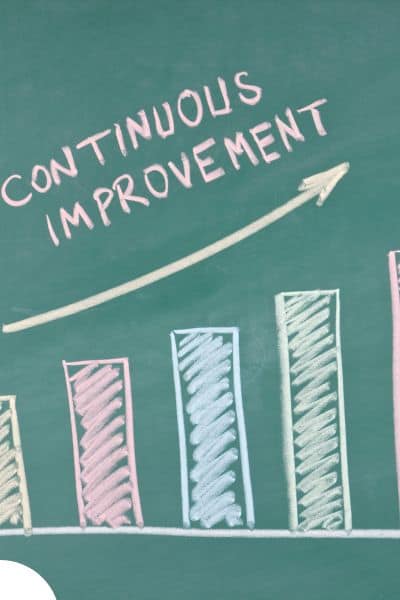Innovation sounds like a big, fancy word, doesn’t it? But really, it’s just a way of saying “finding better ways to do things.”
Whether it’s coming up with a new way to organize work, inventing a cool gadget, or just finding a quicker route to work, innovation is all about making things better.
And the best part? Anyone can do it – yes, even you!
Imagine this: It’s the 1940s in Manila, and Maria Y. Orosa, a brilliant food technologist, is in her kitchen, experimenting with recipes.
Maria invented the banana ketchup we all love today, transforming simple ingredients into something extraordinary. Her creativity and willingness to try new things changed the way Filipinos enjoy their food.
Innovation is like the secret sauce that keeps companies ahead of the game. It’s what helps businesses grow, solve problems, and make work more fun and exciting.
And you don’t need to be a genius or a boss to be an innovator.
You need is curiosity, creativity, and a bit of courage to try new things.
1. What is Innovation?
Innovation sounds like a big, complex word, but it’s quite simple. Think about Maria Y. Orosa and her banana ketchup. She looked at the ingredients she had and thought, “How can I make something new and useful from this?”
That’s innovation: taking something ordinary and turning it into something extraordinary.
Innovation can happen in many ways.
It might be a brand-new invention, like a gadget or a new app. But it can also be a small change that makes a big difference, like rearranging your workspace to be more efficient or finding a quicker way to complete a task.
Everyday Examples in the Workplace
Let’s look at some easy-to-understand examples of innovation in the workplace:
The Sticky Note Solution
Anna, a young employee, noticed her team always struggled with keeping track of tasks. She suggested using a big wall chart with colorful sticky notes. Each note represented a task, and they moved across the chart as the task progressed.
This simple idea made their workflow clearer and more organized.
Flexible Work Hours
Juan, a manager at a busy call center, realized his team was often tired and less productive in the late afternoon. He suggested a flexible work-hour policy, allowing employees to start and finish work earlier.
This small change boosted productivity and made everyone happier.
Customer Feedback Box
At a local coffee shop, the owner placed a suggestion box for customers. This simple act encouraged customers to share their thoughts.
One customer suggested adding more local flavors to the menu, which became a hit and increased sales.
Why Innovation Matters
Innovation is crucial for several reasons:
- Keeps Businesses Competitive: Companies that innovate stay ahead of the competition. By constantly improving products and processes, they attract more customers and grow faster.
- Solves Problems: Innovation helps in finding solutions to everyday problems. When employees think creatively, they can come up with effective ways to overcome challenges.
- Makes Work Enjoyable: Bringing new ideas to the table makes work exciting and enjoyable. It breaks the monotony and encourages a dynamic work environment.
You Can Be an Innovator
You don’t have to be a scientist or a top executive to be an innovator. Innovation starts with a mindset. Here are some tips to help you get started.
Be curious. Always ask questions. Why do we do things this way? Is there a better way? Curiosity is the first step towards innovation.
Embrace change. Don’t be afraid of change. Sometimes, even a small change can lead to big improvements.
Share your ideas. Speak up and share your ideas with others. You never know which idea might spark a great innovation.
Learn from others. Look at what others are doing and learn from their successes and mistakes. Inspiration can come from anywhere.
Innovation is all about making things better. With curiosity, creativity, and courage, you can be an innovator in your workplace, just like Maria Y. Orosa was in her kitchen. Ready to bring your ideas to life?
Let’s continue this journey together!

2. Fostering an Innovative Culture
Open Communication
Imagine a place where everyone feels safe to share their ideas, no matter how big or small. This is what open communication looks like. When people aren’t afraid to speak up, magic happens.
Here’s how you can create an environment that encourages open communication:
Listen actively. Pay attention when others are talking. Show that you value their ideas by asking questions and giving feedback.
Encourage questions. Make it clear that no question is too silly. Questions often lead to great discoveries.
Hold regular meetings. Have regular team meetings where everyone can share updates, ideas, and suggestions. Create a space where everyone feels comfortable speaking up.
Team Diversity
Innovation thrives in diverse teams. When people from different backgrounds and with different perspectives come together, they can create amazing things.
Here’s why diversity matters:
Different Perspectives. People with different experiences see problems and solutions differently. This variety leads to more creative ideas.
Better Problem Solving. Diverse teams are better at solving problems because they bring a wide range of skills and knowledge to the table.
Inclusive Environment. When everyone feels included and valued, they are more likely to contribute their best ideas.
Resource Allocation
To innovate, people need the right resources. This means giving them the tools, time, and support they need to turn their ideas into reality.
Here’s how to ensure your team has what they need:
Provide tools. Equip your team with the necessary tools and technology. Whether it’s software, gadgets, or materials, having the right tools makes a big difference.
Allow time for creativity. Innovation takes time. Make sure your team has enough time to think, experiment, and develop their ideas. This might mean scheduling regular brainstorming sessions or setting aside time each week for creative thinking.
Offer support. Be there to support your team. Encourage them when they face challenges and celebrate their successes. Sometimes, all it takes is a little encouragement to keep the innovative spirit alive.
Creating a Safe Space
A safe space is a place where everyone feels comfortable sharing their ideas without fear of criticism.
Here’s how to create such an environment:
No Judgment Zone. Make it clear that all ideas are welcome and that no one will be judged for their suggestions.
Constructive Feedback. When giving feedback, focus on being constructive. Instead of pointing out what’s wrong, suggest ways to improve the idea.
Celebrate Efforts. Celebrate not just the successful ideas but also the effort and creativity that went into them. Recognize that every idea, even the ones that don’t work out, is a step towards innovation.
Encouraging Collaboration
Innovation often happens when people work together. Encourage collaboration in your workplace by:
Team Projects. Assign projects that require teamwork. This encourages people to share their ideas and build on each other’s strengths.
Cross-Departmental Teams. Form teams with members from different departments. This brings together diverse skills and perspectives.
Brainstorming Sessions. Regularly hold brainstorming sessions where everyone can contribute ideas. Use techniques like mind mapping to organize and develop these ideas further.
Rewarding Innovation
Recognizing and rewarding innovative ideas motivates people to keep coming up with new ones.
Here are some ways to reward innovation:
Recognize and celebrate innovative ideas in front of the whole team. This could be during a meeting or through a company newsletter.
Offer incentives for innovative ideas. This could be a bonus, extra time off, or a special reward.
Whenever possible, implement the innovative ideas that your team comes up with. Seeing their ideas come to life is a great motivator.
Innovation isn’t just about big changes. It’s about small, continuous improvements that make a big difference over time.
Ready to foster an innovative culture in your workplace?
Let’s keep going!

3: Creative Thinking Techniques
Brainstorming Sessions
Brainstorming is like a playground for ideas. It’s a fun, energetic way to come up with new solutions and innovations. Here’s how to make your brainstorming sessions effective and enjoyable:
- Set the Stage: Choose a comfortable space where everyone feels relaxed. Bring snacks, drinks, and maybe even some music to create a lively atmosphere.
- Clear Objectives: Start with a clear goal. What problem are you trying to solve? What new ideas are you looking for? Having a clear objective keeps the session focused.
- Free Flow of Ideas: Encourage everyone to share their ideas, no matter how wild or unusual they may seem. Remember, in brainstorming, there are no bad ideas.
- Build on Ideas: Encourage team members to build on each other’s ideas. One person’s suggestion can spark another’s creativity, leading to even better solutions.
- Capture Everything: Write down all ideas on a whiteboard or sticky notes so everyone can see them. Later, you can sort through and refine these ideas.
Mind Mapping
Mind mapping is a visual way to organize ideas and see how they connect. It’s like drawing a picture of your thoughts. Here’s how to create a mind map:
- Start with a Central Idea: Write the main topic or problem in the center of a large piece of paper or whiteboard.
- Branch Out: Draw branches from the central idea to subtopics or related ideas. Use keywords and short phrases.
- Add Details: From each subtopic, draw more branches to add details, examples, or related thoughts.
- Use Colors and Images: Make your mind map colorful and add images or icons. This makes it more engaging and easier to remember.
- Review and Refine: Once you’ve captured all your ideas, review the mind map. Look for connections or patterns that can help you develop your ideas further.
Craft Speeches Using Mind Mapping
12 Best Ways to Use Mind Mapping for Training
Role-Playing
Role-playing involves acting out different scenarios to explore new ideas and solutions. It’s a fun and interactive way to spark creativity. Here’s how to use role-playing in your workplace:
- Set the Scene: Choose a scenario related to your goal or problem. For example, if you’re looking for ways to improve customer service, act out a customer interaction.
- Assign Roles: Assign different roles to team members. One person might be the customer, another the employee, and another the manager.
- Act It Out: Have team members act out the scenario. Encourage them to improvise and explore different approaches.
- Debrief: After the role-playing, discuss what happened. What worked well? What didn’t? What new ideas or insights emerged?
Play Time
Sometimes, the best ideas come when you’re having fun. Incorporating play into your work routine can boost creativity and innovation. Here’s how to do it:
- Creative Breaks: Take short breaks during the day to do something fun and creative, like drawing, playing a quick game, or doing a puzzle.
- Team Activities: Organize team-building activities that are fun and encourage creative thinking. This could be a group outing, a game day, or a creative workshop.
- Relaxation Spaces: Create spaces in the office where employees can relax and unwind. A comfortable lounge area with books, games, and art supplies can be a great place for spontaneous creativity.
Team Building Activities: A Guide for Leaders
Encouraging Curiosity
Curiosity is the fuel for innovation. Encourage your team to ask questions and explore new ideas. Here’s how to foster curiosity:
- Ask “What If” Questions: Encourage team members to ask “What if” questions. What if we tried this new approach? What if we combined these two ideas?
- Explore New Topics: Encourage continuous learning by exploring new topics and trends. This could be through workshops, online courses, or guest speakers.
- Celebrate Curiosity: Recognize and celebrate curiosity. When someone asks a great question or brings a new idea, acknowledge their curiosity and encourage others to do the same.
Collaborative Tools
Using collaborative tools can make it easier for your team to share ideas and work together. Here are some tools that can help:
- Digital Whiteboards: Tools like Miro or Jamboard allow team members to brainstorm and mind map together online, even if they’re in different locations.
- Project Management Software: Tools like Trello or Asana help teams organize their ideas and turn them into actionable plans.
- Communication Platforms: Platforms like Slack or Microsoft Teams make it easy for team members to share ideas and collaborate in real-time.
Creativity thrives in a playful, curious, and collaborative environment. Ready to think outside the box?
Let’s keep the innovation journey going!

4. Recognizing and Rewarding Innovation
Celebrate Ideas
Recognizing and celebrating ideas, no matter how big or small, encourages everyone to keep thinking creatively. Here are some simple ways to celebrate innovation:
Incentive Programs
Offering incentives is a great way to motivate your team to think creatively and come up with innovative solutions. Here’s how to create effective incentive programs:
Constructive Feedback
Giving constructive feedback is essential to nurturing and refining innovative ideas. Here’s how to provide feedback that encourages improvement:
- Be Positive: Start with positive feedback. Highlight what you like about the idea and why it’s valuable.
- Be Specific: Provide specific suggestions for improvement. Instead of saying, “This needs work,” say, “I think this part could be more effective if we tried this approach.”
- Encourage Iteration: Encourage team members to keep refining their ideas. Remind them that innovation is a process, and it’s okay to make changes and improvements along the way.
Implementing Ideas
One of the most powerful ways to recognize innovation is to implement the ideas that your team comes up with. Here’s how to turn ideas into reality:
- Pilot Projects: Start with pilot projects to test new ideas on a small scale. This allows you to see how the idea works in practice and make any necessary adjustments before a full-scale implementation.
- Assign Champions: Assign “idea champions” to take ownership of the implementation process. This gives team members a sense of responsibility and pride in seeing their ideas come to life.
- Track Progress: Keep track of the progress and results of implemented ideas. Share updates with the team and celebrate milestones along the way.
Creating a Culture of Recognition
To truly foster innovation, recognition should be an ongoing part of your workplace culture. Here are some tips for creating a culture of recognition:
- Regular Recognition: Make recognition a regular part of your routine. Whether it’s through weekly shout-outs, monthly awards, or quarterly celebrations, consistently recognizing efforts keeps the momentum going.
- Peer Recognition: Encourage peer recognition. Create opportunities for team members to acknowledge each other’s contributions. This can be through a recognition board, an online platform, or a simple “kudos” box.
- Leadership Involvement: Involve leadership in the recognition process. When leaders actively recognize and celebrate innovation, it sends a strong message that creativity is valued and supported at all levels.
Encouraging Risk-Taking
Innovation often involves taking risks. Encourage your team to embrace risk-taking by creating a supportive environment:
- Fail Forward: Promote the idea of “failing forward.” Remind your team that failure is a natural part of the innovation process and that each failure brings valuable lessons.
- Safe Space: Create a safe space where team members feel comfortable taking risks and sharing their ideas without fear of criticism or punishment.
- Learn from Mistakes: When things don’t go as planned, focus on what can be learned from the experience. Use mistakes as opportunities for growth and improvement.
Celebrating even the smallest ideas can lead to big changes. Ready to keep fostering innovation? Let’s move forward together!

5. Overcoming Obstacles to Innovation
Common Challenges
Innovation can be exciting, but it also comes with its own set of challenges. Understanding these obstacles is the first step in overcoming them.
Here are some common barriers to innovation in the workplace:
Practical Solutions
Addressing these challenges requires practical solutions that create an environment where innovation can thrive.
Encourage risk-taking. Promote a culture where taking risks is seen as a positive thing. Encourage employees to experiment and remind them that failure is a part of the learning process. Share stories of successful innovations that started as failures to inspire confidence.
Allocate time for creativity. Set aside dedicated time for creative thinking. This could be through regular brainstorming sessions, innovation workshops, or simply allowing employees to spend a portion of their workweek on creative projects. Giving employees time to think and explore new ideas can lead to breakthroughs.
Foster a Growth Mindset. Educate your team about the benefits of change and how it can lead to growth and improvement. Encourage a growth mindset, where challenges are seen as opportunities to learn and develop.
Provide resources. Ensure that your team has access to the tools, materials, and support they need to innovate. This might include investing in new technology, providing training, or setting up a budget for creative projects.
Improve communication. Strengthen communication channels within your team. Encourage open dialogue, regular check-ins, and collaborative platforms where ideas can be shared and discussed freely.
Real-Life Stories
Sometimes, the best way to learn is through examples. Here are a few real-life stories of overcoming obstacles to innovation:
The Call Center Turnaround
At a Manila-based call center, employees felt stifled by strict scripts and rigid schedules. A new manager encouraged the team to suggest improvements. They introduced flexible scripts and allowed agents to personalize their interactions with customers.
This change boosted morale, improved customer satisfaction, and increased sales.
The Tech Company’s Breakthrough
A tech startup faced resistance when they proposed a new project management tool. The team was used to their old methods and didn’t want to change. The project leader organized a workshop to demonstrate the tool’s benefits and provided training sessions.
Over time, the team adopted the new tool, which streamlined their processes and improved productivity.
The Retail Store’s Innovation Box
At a local retail store, employees were hesitant to share ideas because they feared criticism. The store manager introduced an “Innovation Box” where employees could anonymously submit their suggestions. The manager reviewed and implemented the best ideas, leading to improved store layout, better customer service, and increased sales.
The success of these ideas encouraged more employees to participate, fostering a culture of continuous improvement.
Solutions in Action
Let’s take these lessons and apply them in your workplace. Here’s a step-by-step guide to overcoming obstacles and fostering innovation:
Create a safe environment. Foster an atmosphere where employees feel safe to share ideas without fear of judgment. Encourage open communication and constructive feedback.
Offer training and resources. Provide training sessions on creative thinking and problem-solving. Equip your team with the tools and resources they need to turn their ideas into reality.
Celebrate efforts and successes. Recognize and celebrate both the efforts and successes of your team’s innovative ideas. This boosts morale and encourages further creativity.
Set clear goals and objectives. Set clear innovation goals and objectives for your team. Define what you want to achieve and provide a roadmap for how to get there.
Monitor and evaluate. Regularly monitor and evaluate the progress of implemented ideas. Provide feedback and make adjustments as needed to ensure continuous improvement.
Overcoming obstacles is a team effort, and with the right strategies in place, you can unlock the full potential of your team’s innovative spirit. Ready to tackle these challenges head-on?
Let’s keep moving forward!

6. Continuous Improvement and Learning
Continuous learning is the backbone of innovation. When employees are encouraged to keep learning, they bring fresh ideas and perspectives to their work. Here’s how to promote ongoing education in your workplace:
- Workshops and Seminars: Organize regular workshops and seminars on various topics related to your industry. These sessions can be led by internal experts or external speakers and should cover new trends, technologies, and best practices.
- Online Courses: Provide access to online courses and learning platforms. Encourage employees to enroll in courses that interest them and are relevant to their roles. Platforms like Coursera, Udemy, and LinkedIn Learning offer a wide range of topics.
- Reading Groups: Start a reading group where team members can discuss books, articles, and research papers related to innovation and creativity. This not only promotes learning but also encourages collaboration and discussion.
- Learning Allowances: Offer learning allowances or stipends that employees can use to attend conferences, buy books, or take courses. This investment in their development pays off in the form of new skills and ideas.
LinkedIn Learning: Develop Your Creative Thinking and Innovation Skills
Mentorship Programs
Mentorship programs are a powerful way to foster continuous learning and innovation. By pairing experienced employees with those who are newer or looking to develop specific skills, you create a supportive environment for growth.
Here’s how to implement a mentorship program:
- Identify Mentors: Identify experienced employees who have a track record of innovation and are willing to share their knowledge. These mentors should be approachable and have good communication skills.
- Pairing Process: Pair mentors with mentees based on their goals, interests, and areas of expertise. Consider using a matching system that takes into account both parties’ preferences.
- Set Goals: Encourage mentors and mentees to set clear, achievable goals for their partnership. These could include learning new skills, developing specific projects, or gaining insights into certain aspects of the business.
- Regular Check-ins: Schedule regular check-ins between mentors and mentees to discuss progress, challenges, and next steps. These meetings help maintain momentum and ensure both parties are benefiting from the relationship.
Experimentation Culture
Creating a culture of experimentation is essential for continuous improvement and innovation. When employees feel free to test new ideas and learn from their experiences, they’re more likely to come up with creative solutions. Here’s how to promote an experimentation culture:
Building a Knowledge-Sharing Culture
A knowledge-sharing culture ensures that everyone benefits from the collective intelligence of the team. Here’s how to build a culture of knowledge sharing:
- Internal Knowledge Base: Create an internal knowledge base or wiki where employees can document and share their knowledge, insights, and best practices. This resource should be easily accessible and regularly updated.
- Peer Learning Sessions: Organize peer learning sessions where team members can teach each other about their areas of expertise. These sessions can be informal and cover a wide range of topics.
- Open Communication: Foster open communication channels where employees feel comfortable sharing their ideas and knowledge. This could be through regular meetings, online forums, or social media groups.
- Recognition and Rewards: Recognize and reward employees who actively contribute to the knowledge-sharing culture. This could be through formal awards, shout-outs in meetings, or other incentives.
Staying Updated with Industry Trends
Keeping up with industry trends is crucial for continuous improvement and innovation. Here’s how to ensure your team stays informed:
Continuous Improvement Processes
Implementing continuous improvement processes ensures that innovation is a regular part of your workplace culture. Here’s how to establish these processes:
Encourage your team to keep learning, experimenting, and sharing their knowledge. With these practices in place, your workplace will be well-equipped to adapt and thrive in a constantly changing world. Ready to keep the innovation journey going?
Let’s make continuous improvement a part of our everyday work life!







